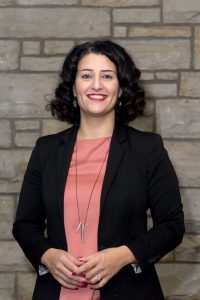A Guide to Large Classroom Assessments
By Eliana Elkhoury

In an exploratory study on Teaching and Learning in Large Classes at Ontario Universities, Kerr (2011) found that all instructors agreed that large classrooms had common assessment related issues. First, instructors found it challenging to create authentic assessments for a large number of students. In addition, the large number of students created a considerable workload when giving feedback and marking. Providing opportunities for formative assessment were also difficult with large numbers of students as this approach also created a large workload. Finally, instructors found it was challenging to fairly assess a diverse mix of students.
In response to the challenge of assessing large classrooms, and building off of the newly created 35 Alternatives to Traditional Assessment document, a new guide was created to support instructors who teach large classrooms. Within this guide, instructors are provided with tools that allow them to think differently about assessing large classrooms, alternative assessment methods that would work with large classrooms, along with examples from different universities and professors. Finally, this guide provides tips for managing grading and feedback in large classrooms.
You can check out the new Guide to Large Classroom Assessments here!
The definition of a large classroom varies from one discipline to another. In some disciplines, a class of 60 students is considered a large classroom. In other disciplines, large classrooms could contain up to 1000 students and sometimes even more. Similarly, assessment practices differ from one discipline to another. Therefore, this guide serves as a description of different approaches that instructors could try. It is a by no means a prescriptive guide as some instructors might be comfortable trying some techniques and not others. In this guide you will find examples on how professors from different universities in Canada used these tools in large classes of 280, 500, 1500, and 1800 students. We hope these examples help inspire on what is possible and learn from others’ experiences.
Within this guide we discuss not only different ways to approach assessment, but also provide some tips and general advice on managing grading and feedback of large classrooms. For example, topics include suggestions for not only multiple choice exams, but also alternative assessments such as a two-staged exam, take home/open book options, and peer-based work. Different concepts such as group assessment and flexible options (e.g. students choose from a "menu" of assessment choices) are also touched on, along with strategies to collect feedback and/or use formative assessment in the form of Classroom Assessment Techniques.
Some general tips and advice include scaffolding throughout the semester by creating smaller formative or summative assessments along the way, instead of one large assessment at the end. As an instructor, you could use peer- and self-assessment, or you could design group assessments instead of individual assessments. Small things like building the assessment tasks into learning activities rather than as add-ons can help keep students engaged with the material. Additionally, providing clear and consistent instructions and expectations (e.g. in the form of rubrics) will help mitigate stress for everyone, whether it's the students completing the task, the TAs responsible for grading, or you the instructor who deals with the aftermath of large classroom assessments.
In general, there is little information about assessing large classrooms and particularly about using alternative assessments in large classrooms. I would like to invite you to try some of these techniques and let us know how they went in your classroom. We want to hear from you, so post a comment below!
Additionally, you are welcome to join us on March 4th at 10:00 a.m. in our 12 Days of Assessment webinar series to learn more about this guide and ask any questions that you might have.
You can find out more about the webinar series on our Assessment webpage, or by checking out the Calendar of Events!
Finally, I would also like to offer support for anyone who is interested in trying any of these in your classroom and need to discuss ideas. Please reach out to me (Eliana Elkhoury) at eelkhour@yorku.ca if you have any comments about the guide or if you would like to set up a meeting to discuss how you could implement those techniques in your classroom.
References
Kerr, A. (2011). Teaching and Learning in Large Classes at Ontario Universities: An Exploratory Study. Toronto: Higher Education Quality Council of Ontario
About the Author
Eliana completed her PhD in Learning Sciences at the University of Calgary and is now an Educational Developer with the Teaching Commons. Her research interests include a variety of subjects such as innovation in teaching and learning, teacher education, adult education, online education, education technology, and intercultural education. Eliana worked on multiple SoTL interdisciplinary projects, she is passionate about student life and working with international students.
